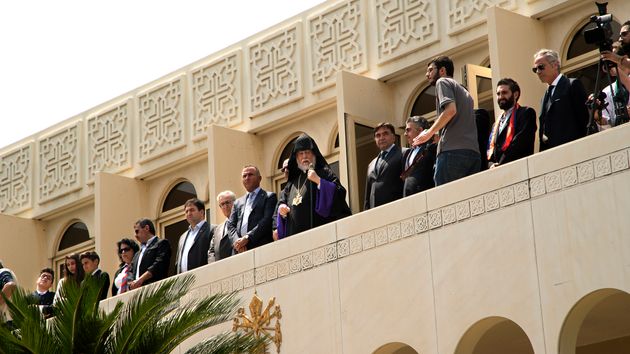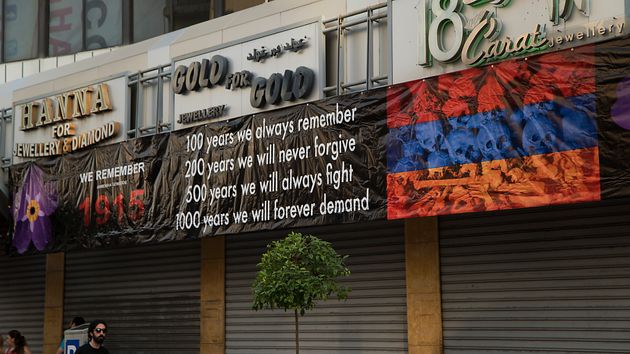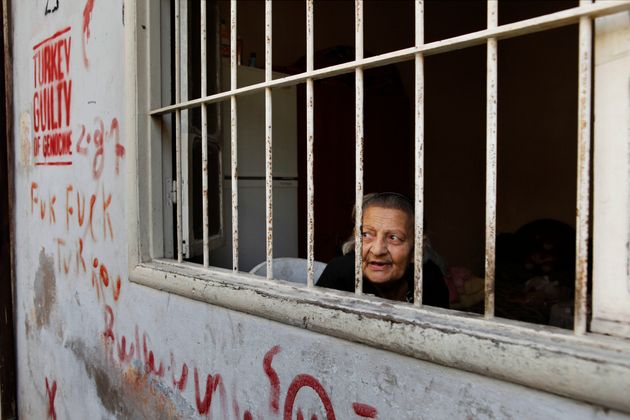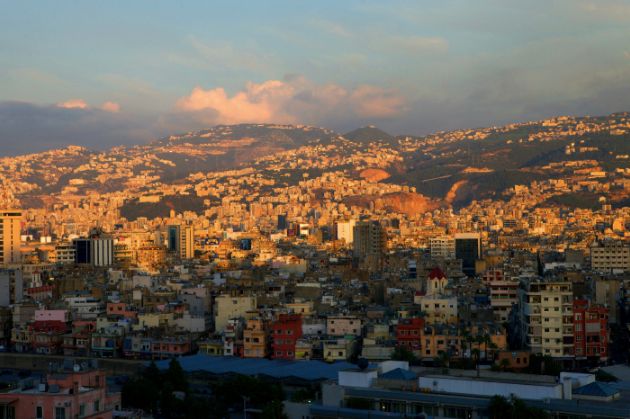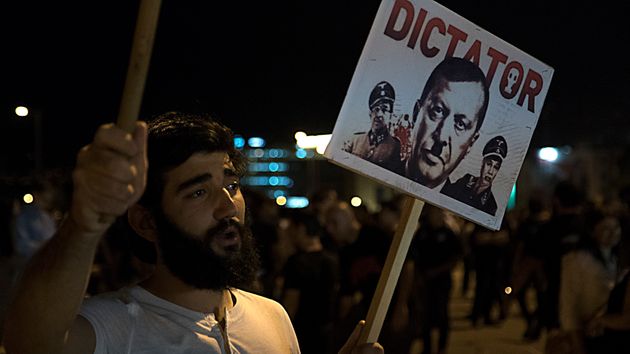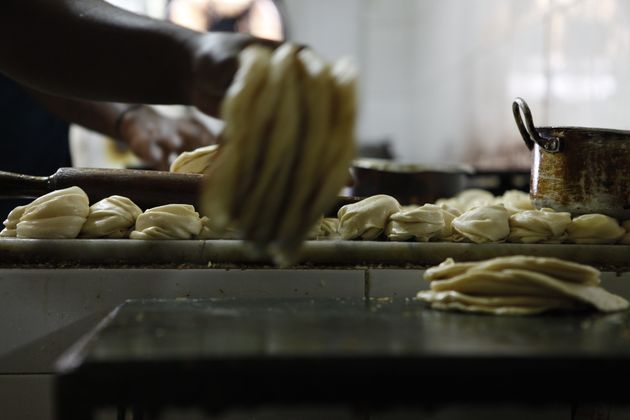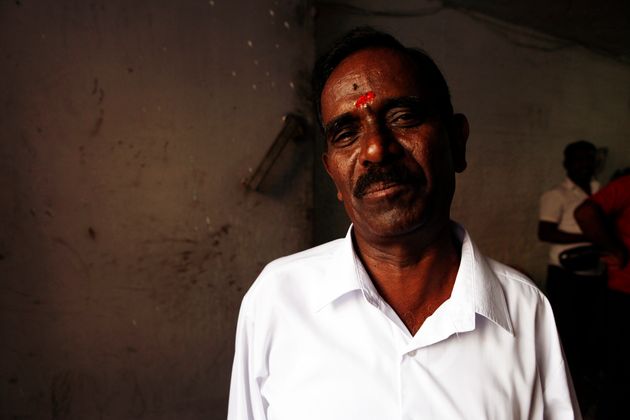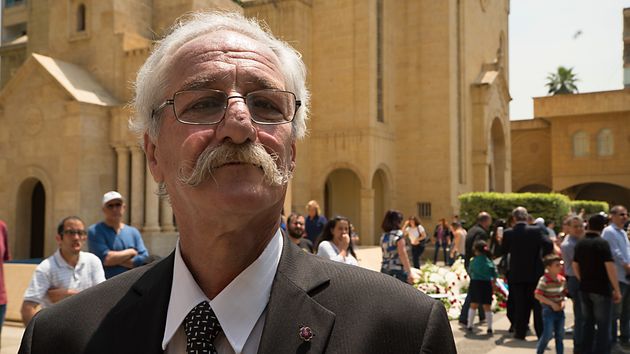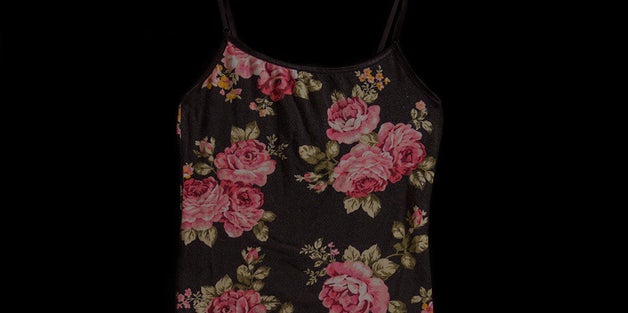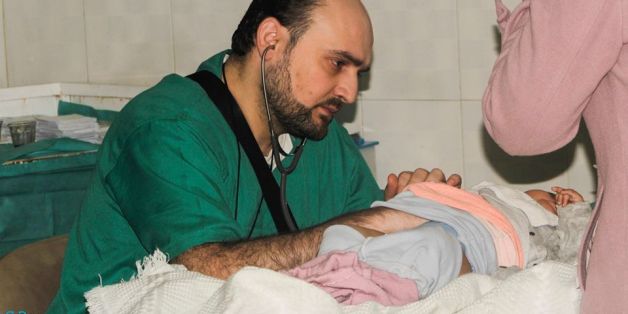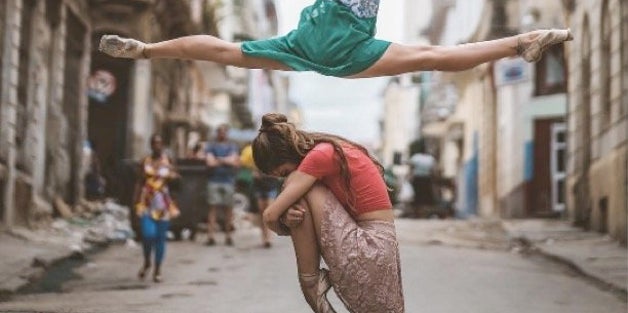by – Huffington Post

As Armenians across the
world commemorated the 101st anniversary of the 1915 Genocide, we
visited Bourj Hammoud in Beirut, where Armenians fleeing the horrors in
Anatolia built new lives.
It is Sunday, April 24, 2016, and Beirut’s
chaotic Dora roundabout is at its frenetic best. Lebanese taxi drivers
shout destination names, while Ethiopian women in white scarves make
their way to church. Diverse groups of women from Ghana, Togo and the
Philippines pick through clothing racks at discount fashion shops while a
group of Kurdish men sip coffee on the sidewalk. Meanwhile, a Sri
Lankan restaurant continues its lunch service unabated, serving up hot
rotis and fish curry to its clientele of South Asian migrant workers.
of the Armenian Apostolic (Orthodox) Church, watches the genocide
commemoration ceremony taking place on the church grounds.
However, on this particular
day, an unusually high number of shops are closed. Instead of bustling
storefronts, shuttered buildings stand draped in banners with slogans in
Armenian, Arabic and English. The banners mark the remembrance of the
Armenian Genocide, 101 years to the day after it began. Many of the shop
owners, their families and their neighbors are taking the day off to
commemorate the horrors of the episode that resonate in their
communities and collective memories to this day.
for the recognition and remembrance of the Armenian Genocide. Jewellery
is one of the trades that Armenians from Anatolia brought to Lebanon in
the early 20th century.
The scenes on the street
encapsulate the surprising diversity of the Beirut neighborhood of Bourj
Hammoud, sometimes referred to as “Little Armenia.” Nearly a century
after it was established as a refuge for Armenians fleeing the Ottoman
massacres of World War I, Bourj Hammoud continues to be a haven where
some of the most downtrodden have begun new lives: some displaced by
war, some who have fled economic deprivation and some who fell through
the cracks because the system in their home country failed them. The
area’s tradition of relative openness has made it arguably one of the
most diverse and dynamic neighborhoods in all of Lebanon.
This dynamism has resulted
in puzzling paradoxes and some difficulties in recent years. Bourj
Hammoud is a place of prosperity, but also poverty. It is home to large
industries, but also timeless handicrafts. It is the cultural cradle for
Lebanon’s Armenians, but its Armenian population has been slowly
dwindling. Communal tensions between Syrian refugees and
Lebanese-Armenians have at times boiled over into violence, especially
since longstanding tensions in the Syrian-Lebanese relationship have
become more apparent due to the refugee crisis. Meanwhile, the first
hints of gentrification are beginning to show, and the neighborhood is
beginning to be considered “hip” by Beirut’s young, creative crowd.
If one stands on the eastern slope of Beirut’s hilly Achrafieh
neighborhood, they can see the entirety of Bourj Hammoud. One of the
most densely populated suburbs in the Middle East, it lies sandwiched by
the Beirut River to its west, and the foothills of the Mount Lebanon
range to its east. However, if one was to stand in this same spot a
century ago, the view would have been little more than marshland
sprinkled with a few farm houses.
In the years following the
Armenian Genocide of 1915, entire communities of surviving Anatolian
Armenians sought refuge amid the Syrians and the Lebanese. Those who
made it as far as Beirut settled in makeshift shelters haphazardly built
on the marshlands on the city’s outskirts. Aware of the sectarian
dynamics of the Lebanese political system, the Armenian Catholic Church
lobbied for full citizenship for the refugees, who were then permitted
to erect permanent structures.
“Bourj Hammoud is a symbol of Lebanese-Armenian existence,” Vartan
Khacharian, one of the organizers of the commemoration ceremony,
explains, brimming with pride. After fleeing Ottoman Turkey, he said,
“they stayed together in a kind of Armenian ghetto. They built their
churches there, they built their clubs and their schools there.
Everything was established in Bourj Hammoud.”
Cicilia Church in Antelias to commemorate those killed in the Armenian
Genocide.
Despite incredible hardship,
the Armenians were among the fortunate ones in terms of resettlement.
Lebanon’s fragile political make-up would mean that subsequent waves of
refugees would not be granted the same opportunities. The arrival of
725,000 Palestinian refugees in Lebanon fleeing the newly established
state of Israel in 1948, and later into the 1960s and 1970 due to
sporadic conflicts following the Six-Day War, introduced new levels of
political and economic pressure into Lebanon. Bourj Hammoud’s low rents
and then-unpopulated outskirts provided an area for displaced
Palestinians to build their own make-shift homes, and a community was
established in the marshlands of the Karantina and Tal-al-Zaatar
districts.
As Bourj Hammoud’s economy began to develop in the 1950s and 60s,
rampant unemployment and political instability in southern Lebanon drove
many Lebanese to Beirut in search of work and safety. Bourj Hammoud’s
Nabaa district became home to a mix of Shia-Lebanese and Palestinians
who found cheap housing and jobs in the neighborhood’s burgeoning
industrial sector.
holds a placard depicting Turkish President Recip Teyyip Erdogan as
Hitler.
For Khacharian, the legacy
of the genocide and the Armenian experience as a minority – the
perpetual outsiders – in Ottoman Turkey played a role in Bourj Hammoud’s
openness. But pragmatism was an even bigger motivator. Just as
Anatolian Armenians had thrived on strong business and social relations
with their compatriots in Ottoman times, Lebanese-Armenians did the
same. Municipal officials and local political parties saw economic value
in opening the neighborhood to those from other parts of the country,
provided those communities kept their political and sectarian ambitions
in check.
Sebouh Aprahamian, a 57-year-old teacher and longtime resident of
Bourj Hammoud, recalls how a delicate balance of business interests and
political security bolstered the neighborhood’s diversity, even in times
of national crisis.
“People saw that everybody lived in Bourj Hammoud…. [it was seen as] a
community that is open to everybody, where business is open to
everybody,” said Aprahamian. “For example, a Sunni sheikh could wear his
religious clothing in the street and have no problem [despite it being a
predominantly Christian neighborhood] … It was not always like that in
other parts of Beirut.”
Aprahamian recalls how, during the Lebanese Civil War that ran from
1975 to 1990, local political parties tried to remain neutral in the
conflict to spare Bourj Hammoud. This was easier said than done, and
outbreaks of horrific violence did occur, including massacres in the
nearby Palestinian camps. However, a relative calm prevailed in the
neighborhood for much of the war, and it once again became a destination
for businesses and families relocating from Beirut’s decimated city
center.
From the 1980s, when the
civil war started to subside, to the present day, a combination of
lucrative industries and low rents brought eclectic waves of migrants.
This time many of the new arrivals came from countries as far-flung as
the Philippines, India, Sri Lanka and Ethiopia. Many came to work as
domestic helpers, sanitary workers or traders in the textile and garment
industries. Syrian laborers also took up residence as they sought jobs
in the post-war reconstruction of Lebanon. The 2011 outbreak of the
Syria crisis saw the Syrian population grow exponentially as refugees
crossed the border.
But memories of the Syrian
occupation of Lebanon during the civil war, a sense of historic
vulnerability due to the Armenian Genocide have stoked a strong sense of
distrust toward Syrians from some members of the Armenian community.
Overcrowding and poor infrastructure also drove a significant number of
Bourj Hammoud’s Armenians to relocate to newer suburbs north of Beirut
over the years. The idea of a dwindling Armenian presence and a
skyrocketing Syrian population in the neighborhood worries some
Armenians. They feel they are losing their cultural cradle.
pauses between work. He is amongst the lucky few to have a stable
income.
Aprahamian witnessed how
that sense of insecurity sometimes resulted in dangerous consequences.
Recalling an outbreak of violence two years ago, he explained how a
small dispute was manipulated and treated as an outbreak of communal
violence.
“There was a problem, an ‘honor issue,’ between two men [one
Armenian, one Syrian-Kurd] and violence broke out. However, it wasn’t
until after the problem happened that it became politicized and some
more radical people in the community started evoking the language of the
genocide and trying to position the event as a continuation of that
history.”
Despite these fears, Panos
Manjian, a retired Lebanese Army General and Armenian Revolutionary
Federation member, feels the Armenian connection to Bourj Hammoud runs
deep. “Bourj Hammoud is the heart of the Armenian community in Lebanon,”
he says, attending a church mass commemorating the genocide in the
northern Beirut suburb of Antelias. “Even if people are moving away
because of the conditions, they have their trade there, they have their
heart there, they have their soul there.”
Most feel that, despite the new influences, Bourj Hammoud will remain
Lebanon’s “Little Armenia,” but with ample room for newcomers.
This article originally appeared on Refugees Deeply. For weekly updates and analysis about refugee issues, you can sign up to the Refugees Deeply email list.
FOLLOW WORLDPOST
CONVERSATIONS
SUGGESTED FOR YOU
The Obamas Trade Escalating Twitter Threats With Prince Harry And Queen Elizabeth II
Photographer Documents What Students Wore When They Were Sexually Assaulted
Eagles Feed Cat To Chicks On Live Cam, Prove Nature Is Horrific
Last Night, My Friend, Aleppo’s Most Qualified Remaining Pediatrician, Was Killed
Hilarious ‘Talking Cat Collar’ Speaks What Your Cat Is Thinking
First Woman To Win ‘The Biggest Loser’ Opens Up About Gaining Back The Weight
Breathtaking Photos Capture Cuba’s Legendary Ballerinas Dancing In The Streets
Here’s The Strangest Thing You Didn’t Know About The Olsen Twins
The House Just Voted To Give Wall Street Billions From Americans’ Retirement Savings
This Rotting, 60,000-Pound Whale Is Getting The Most Gruesome Burial

